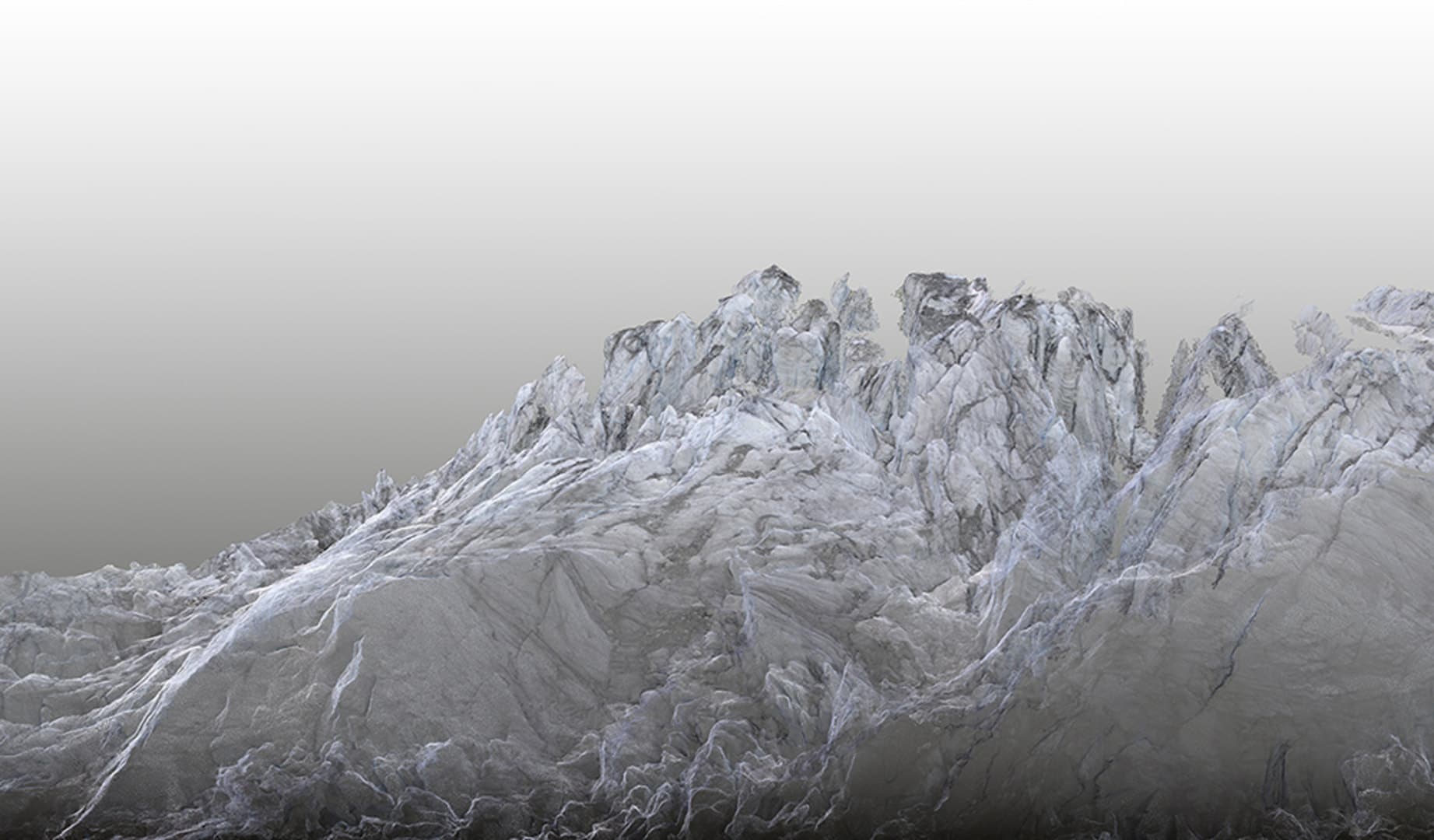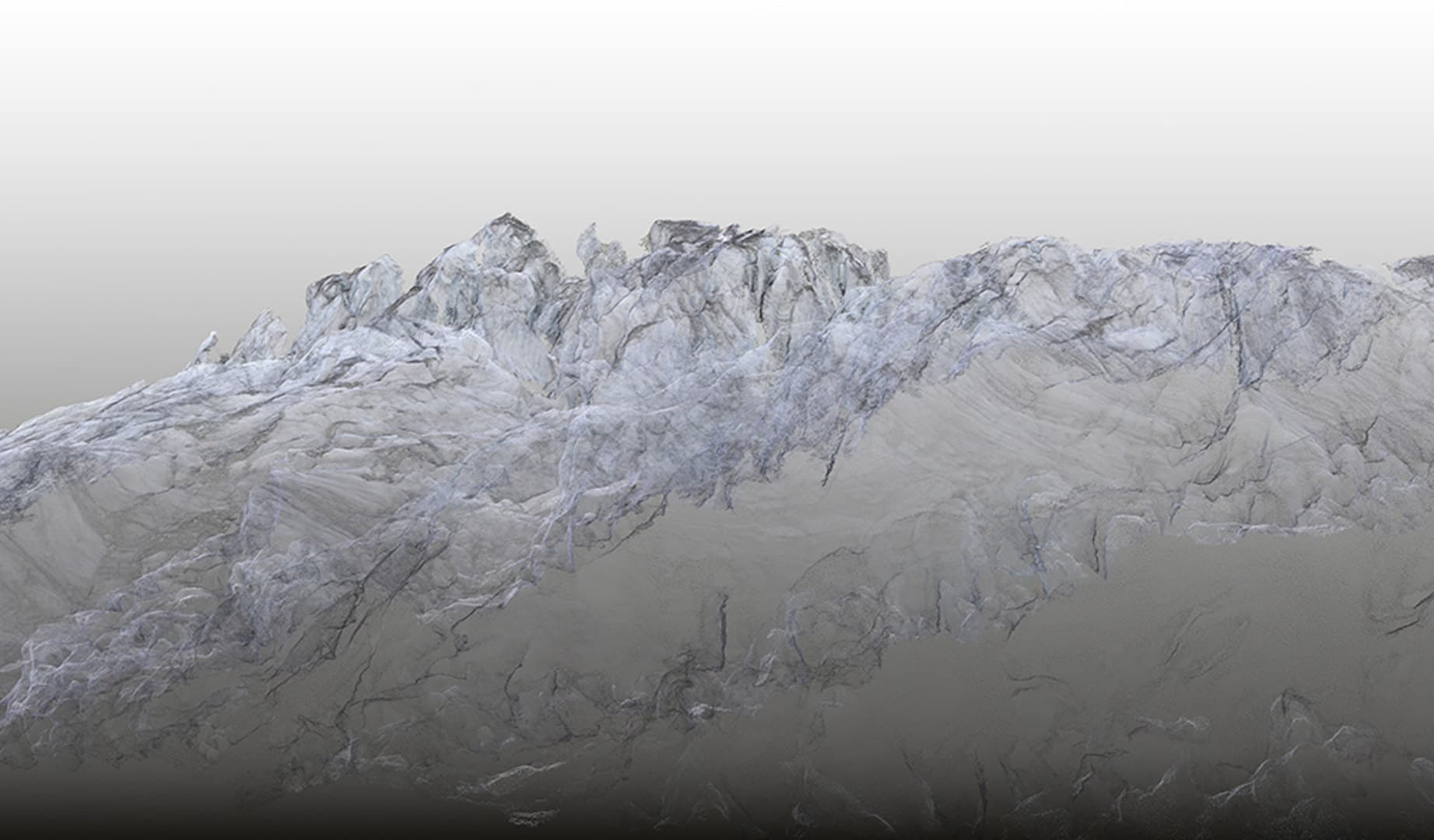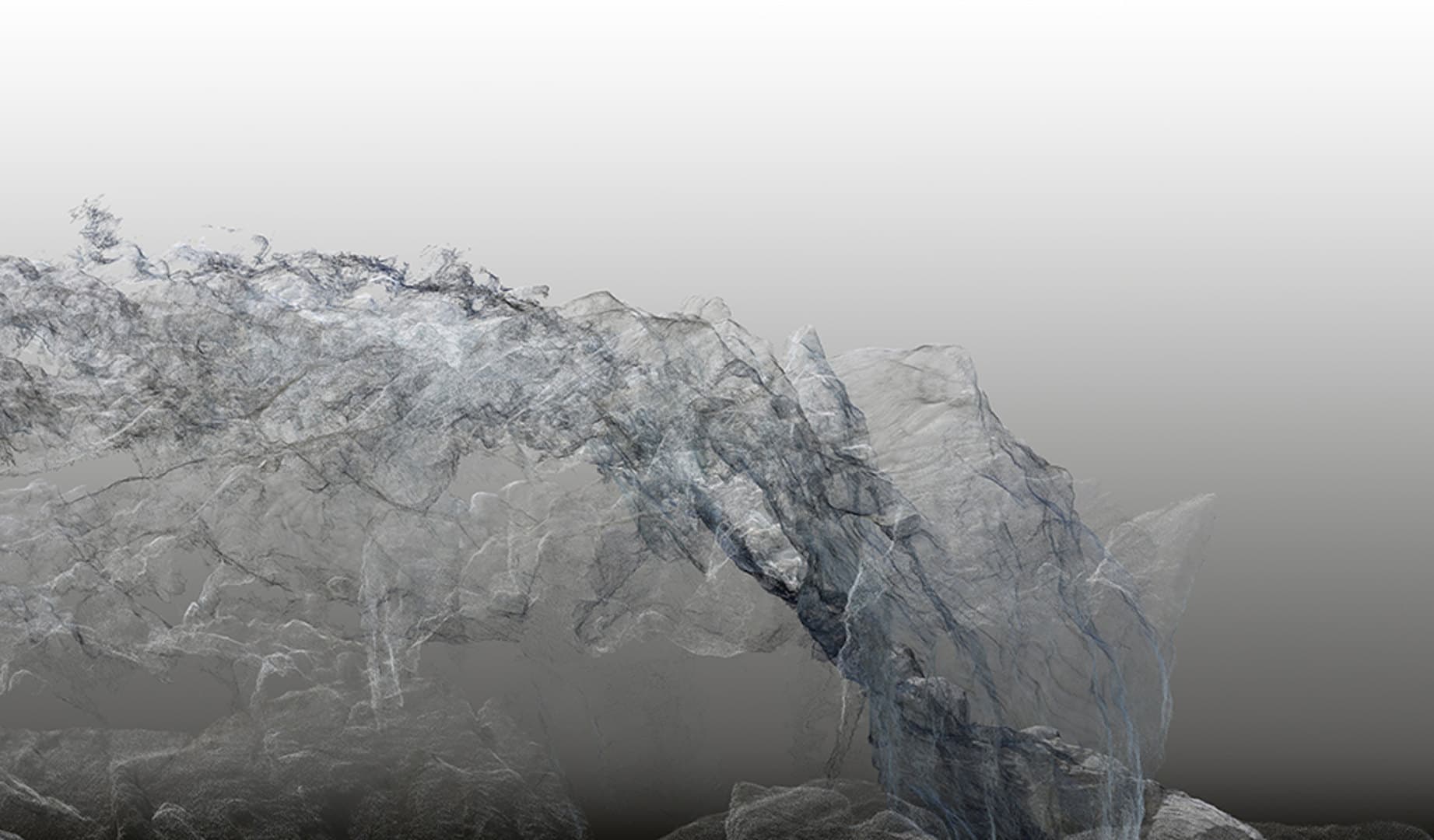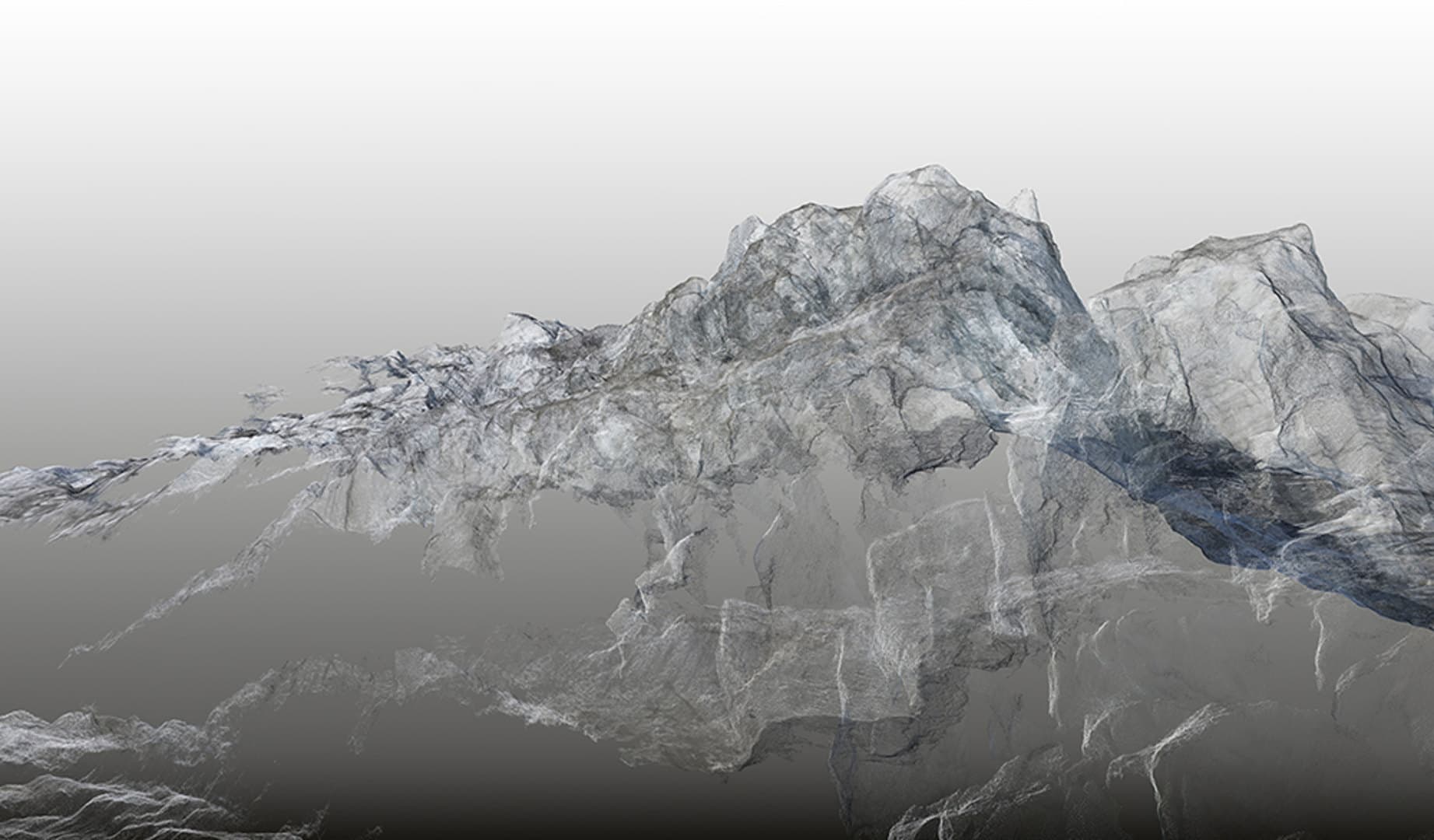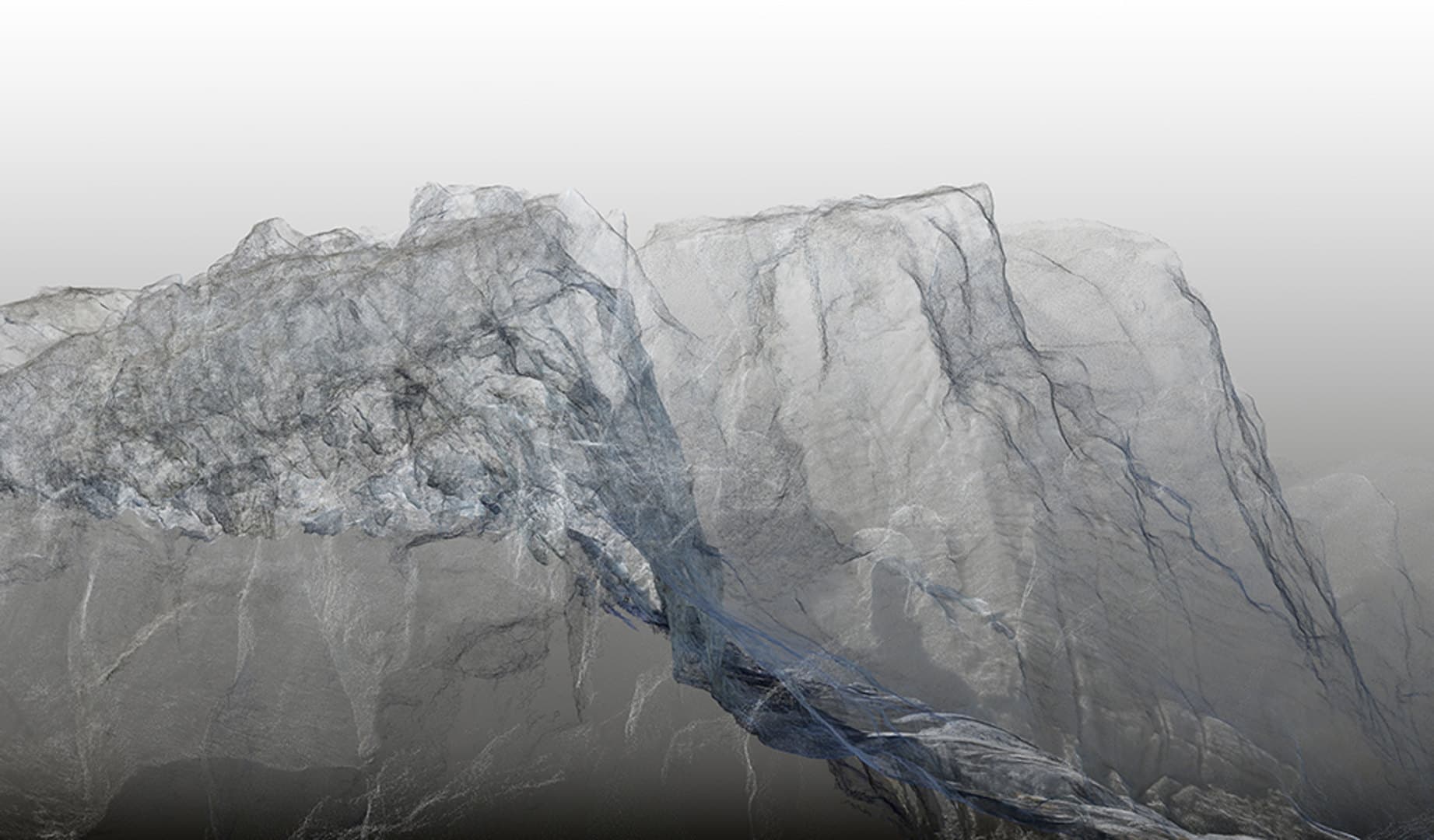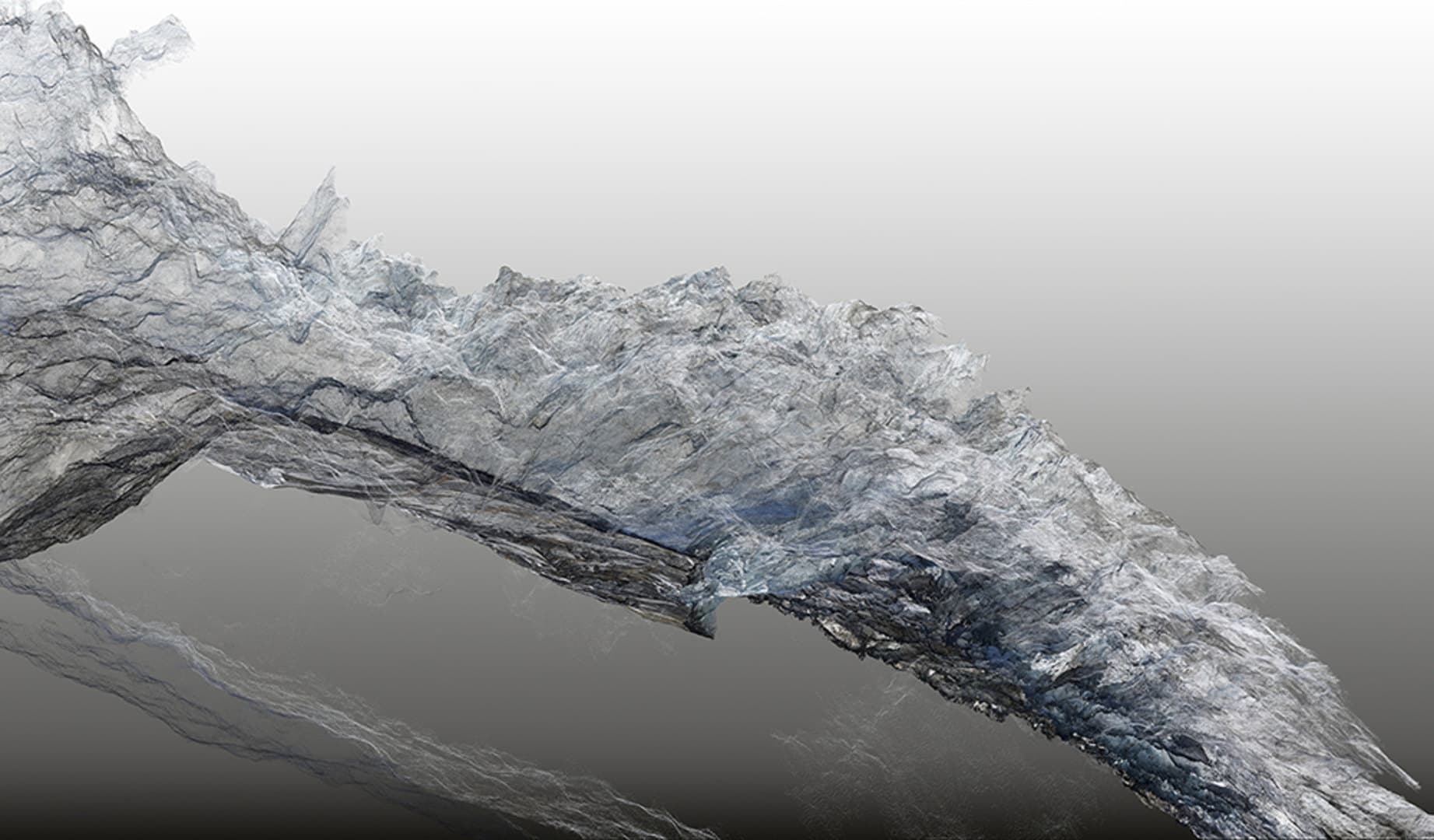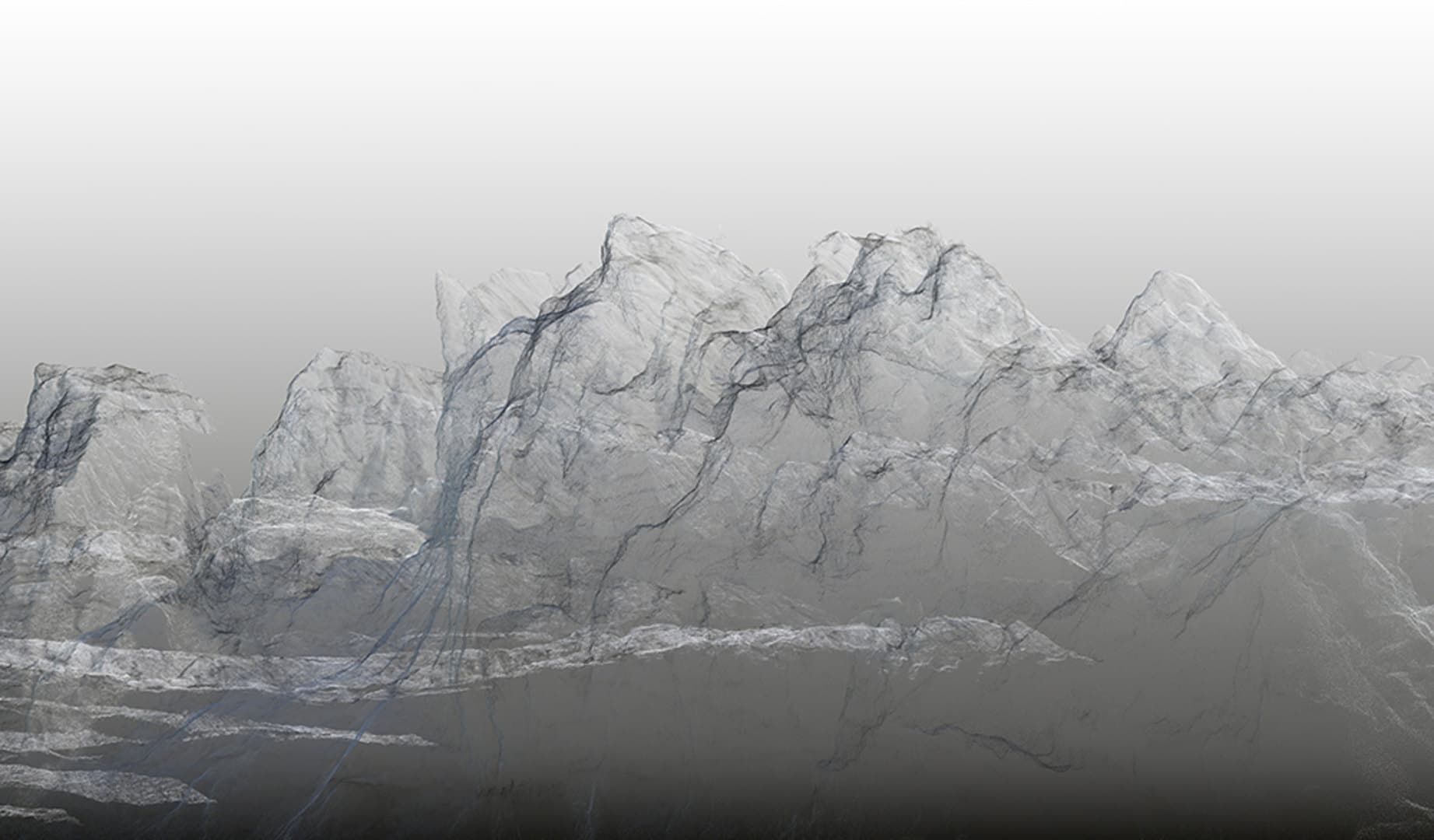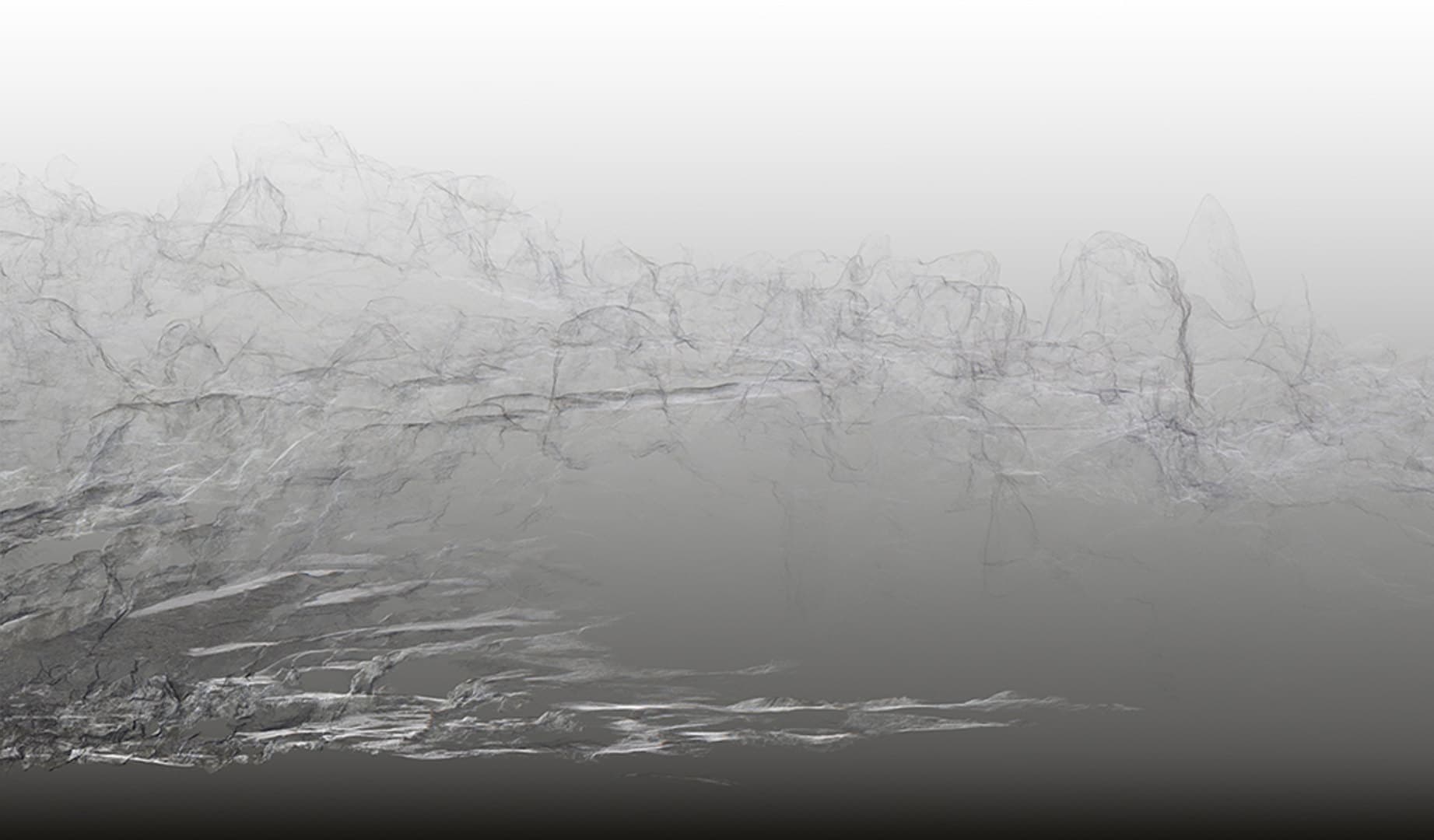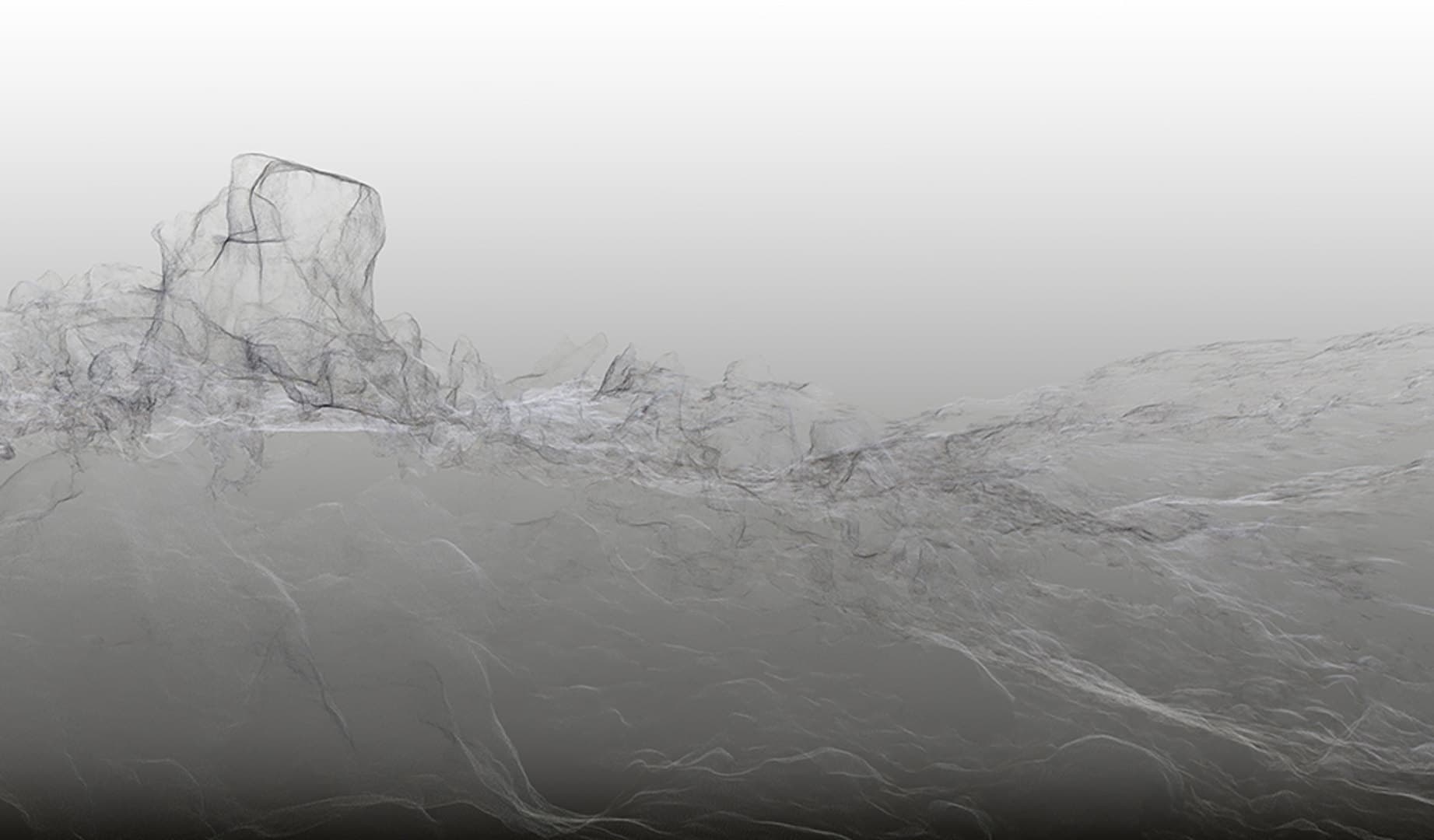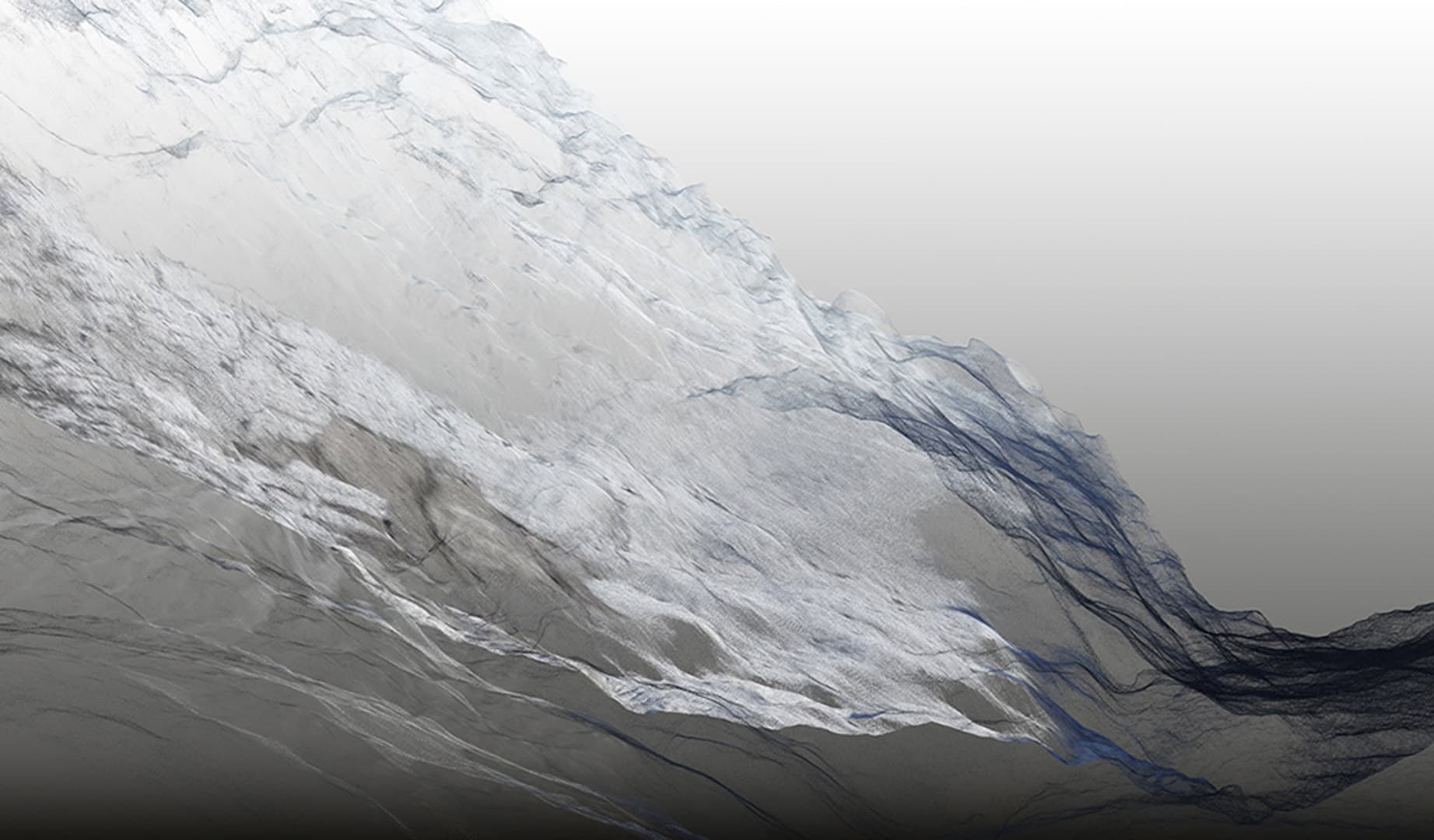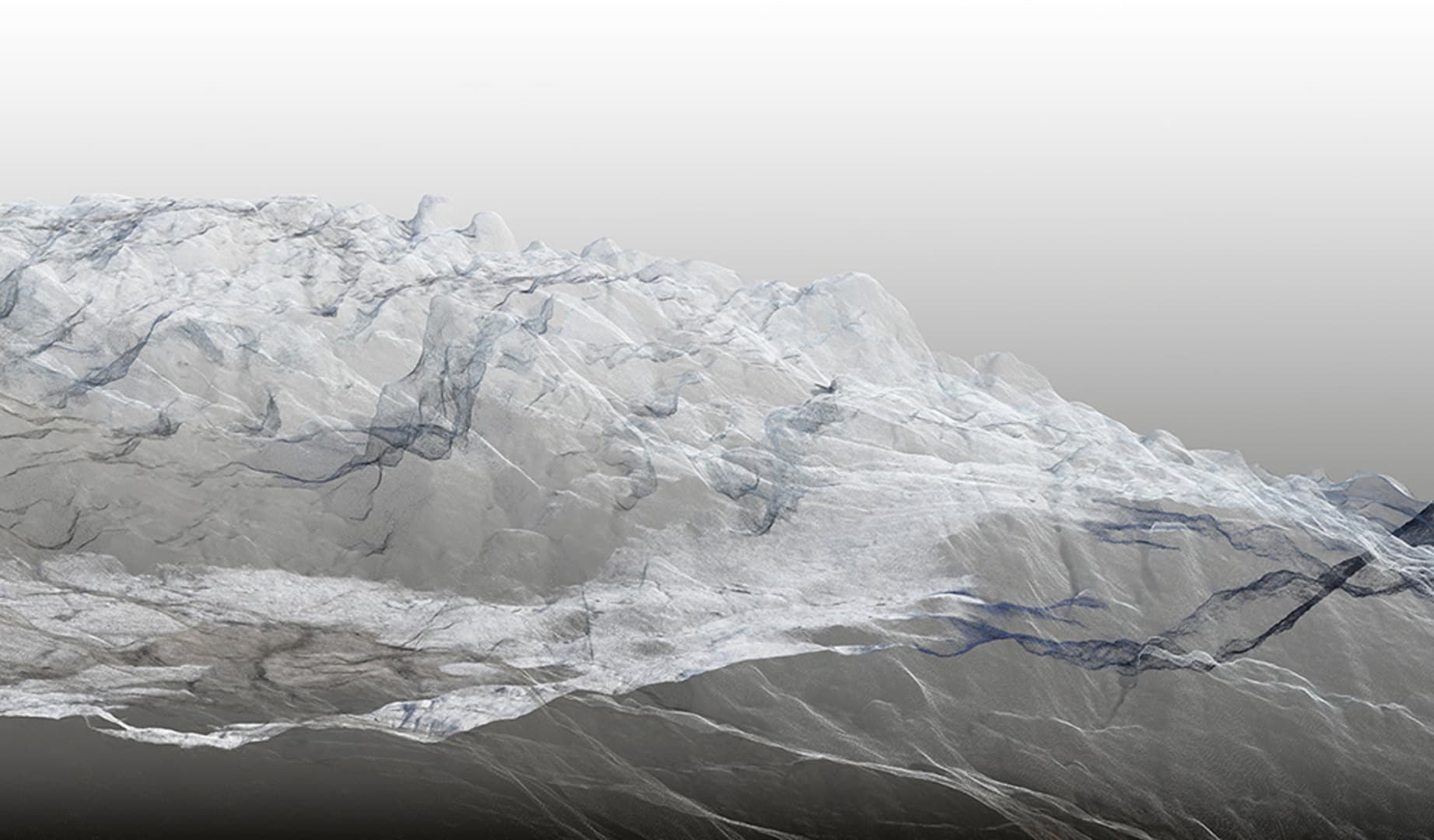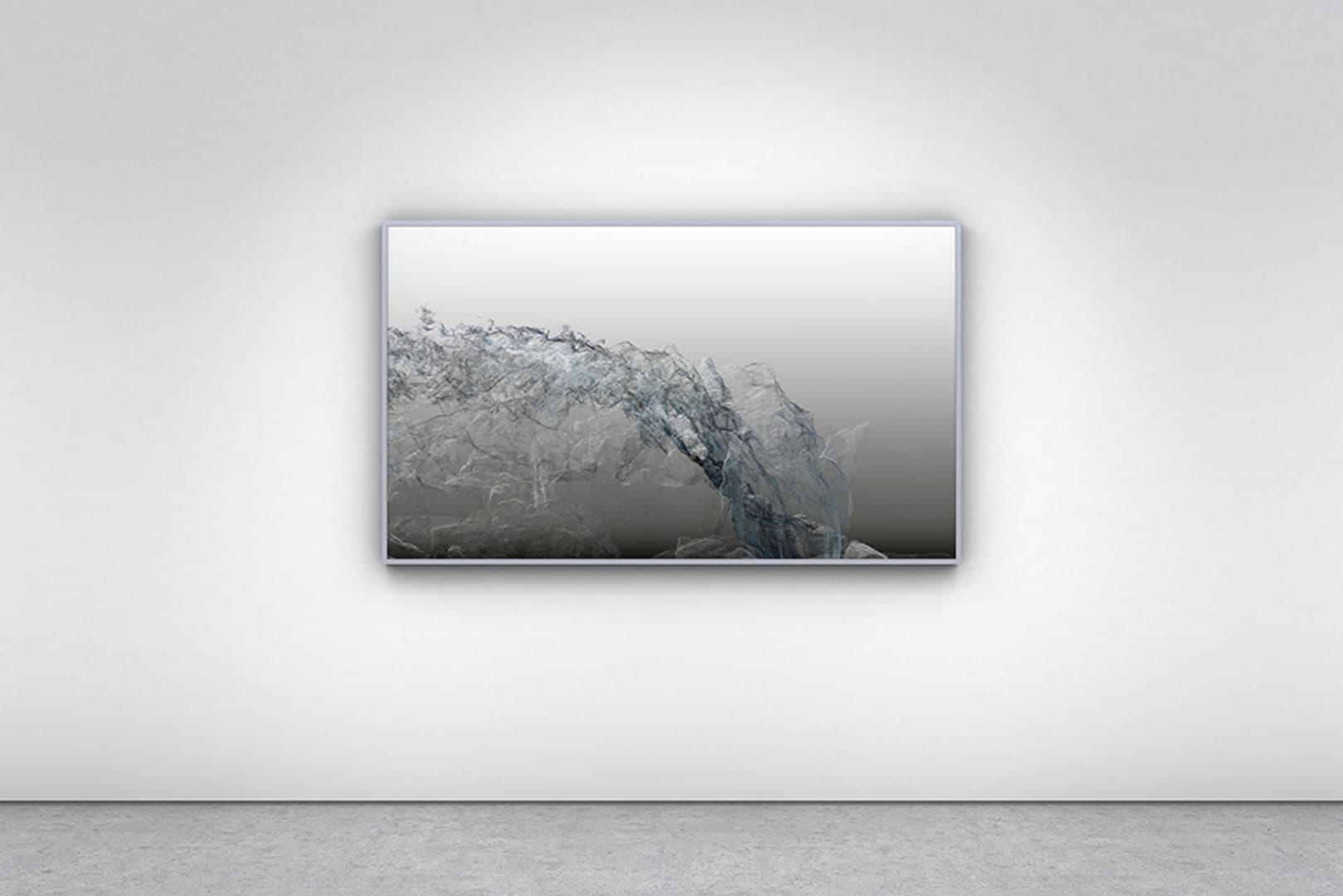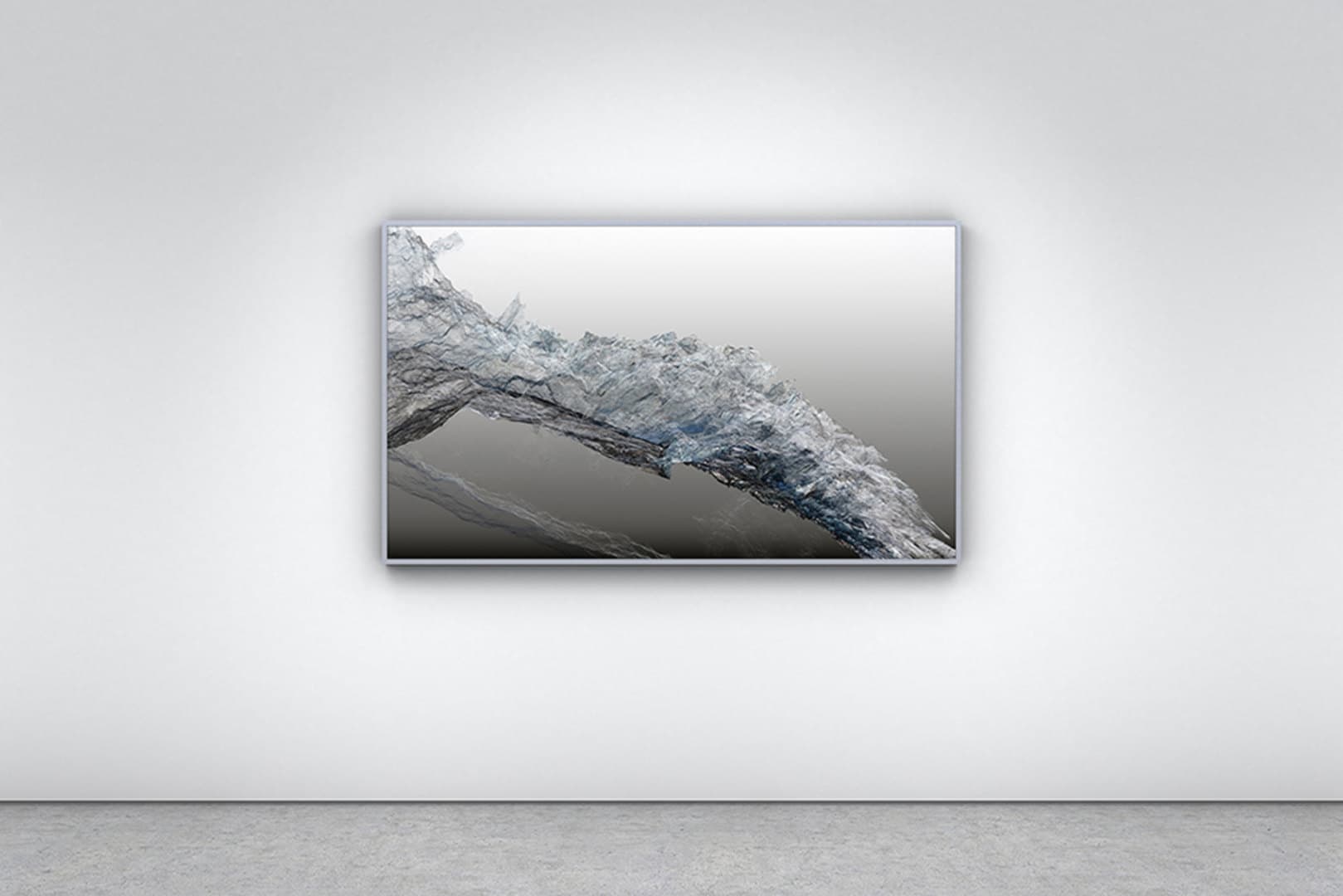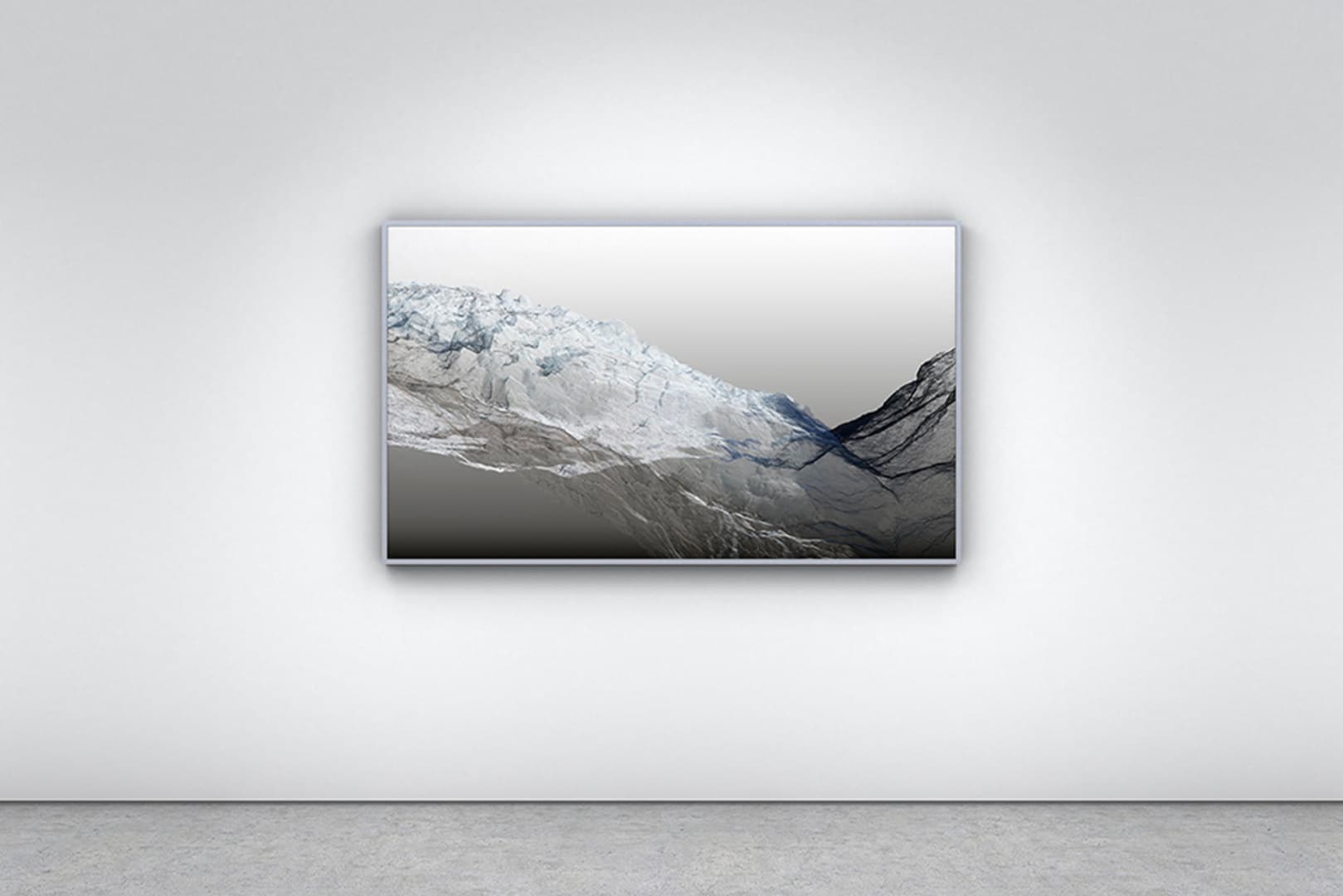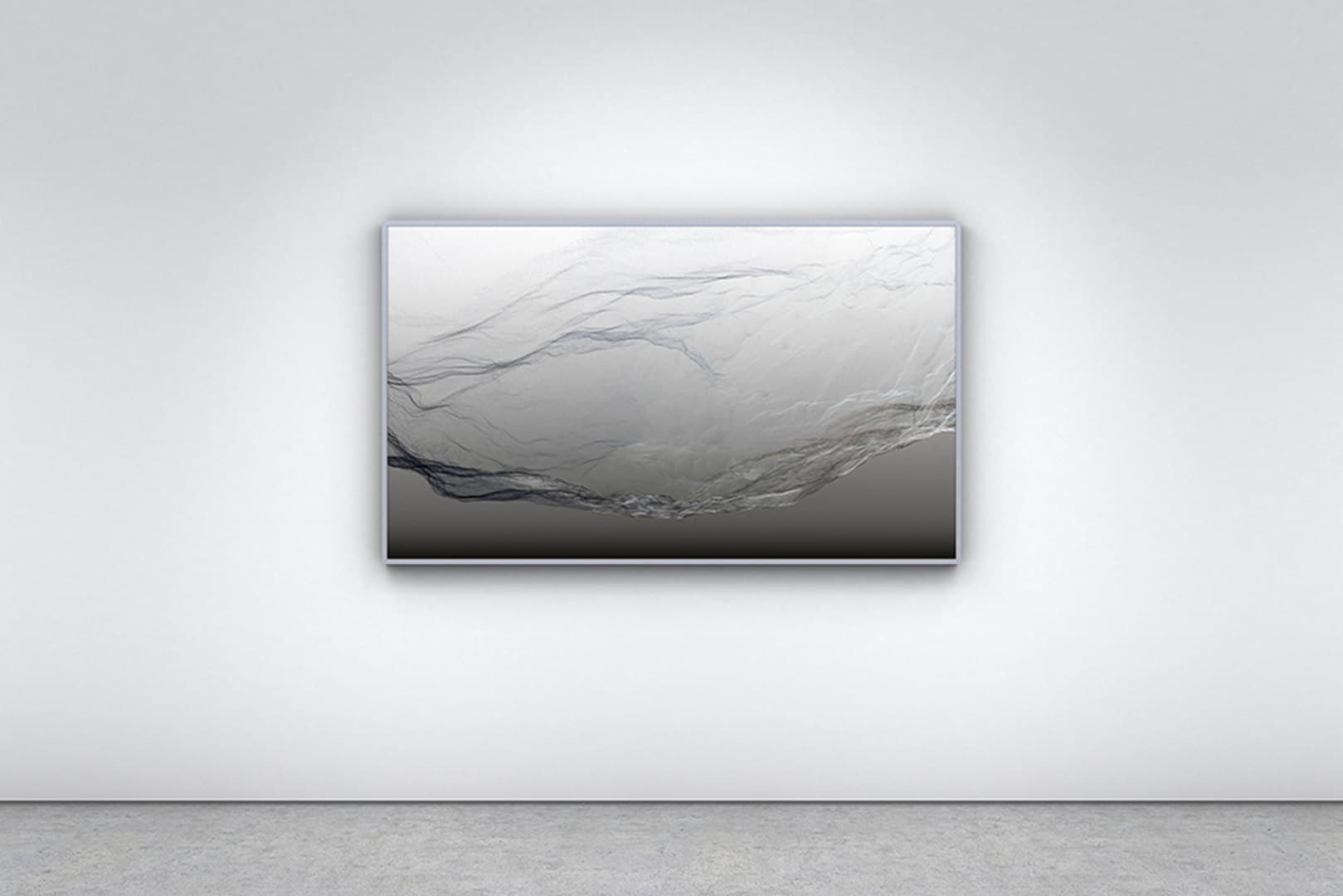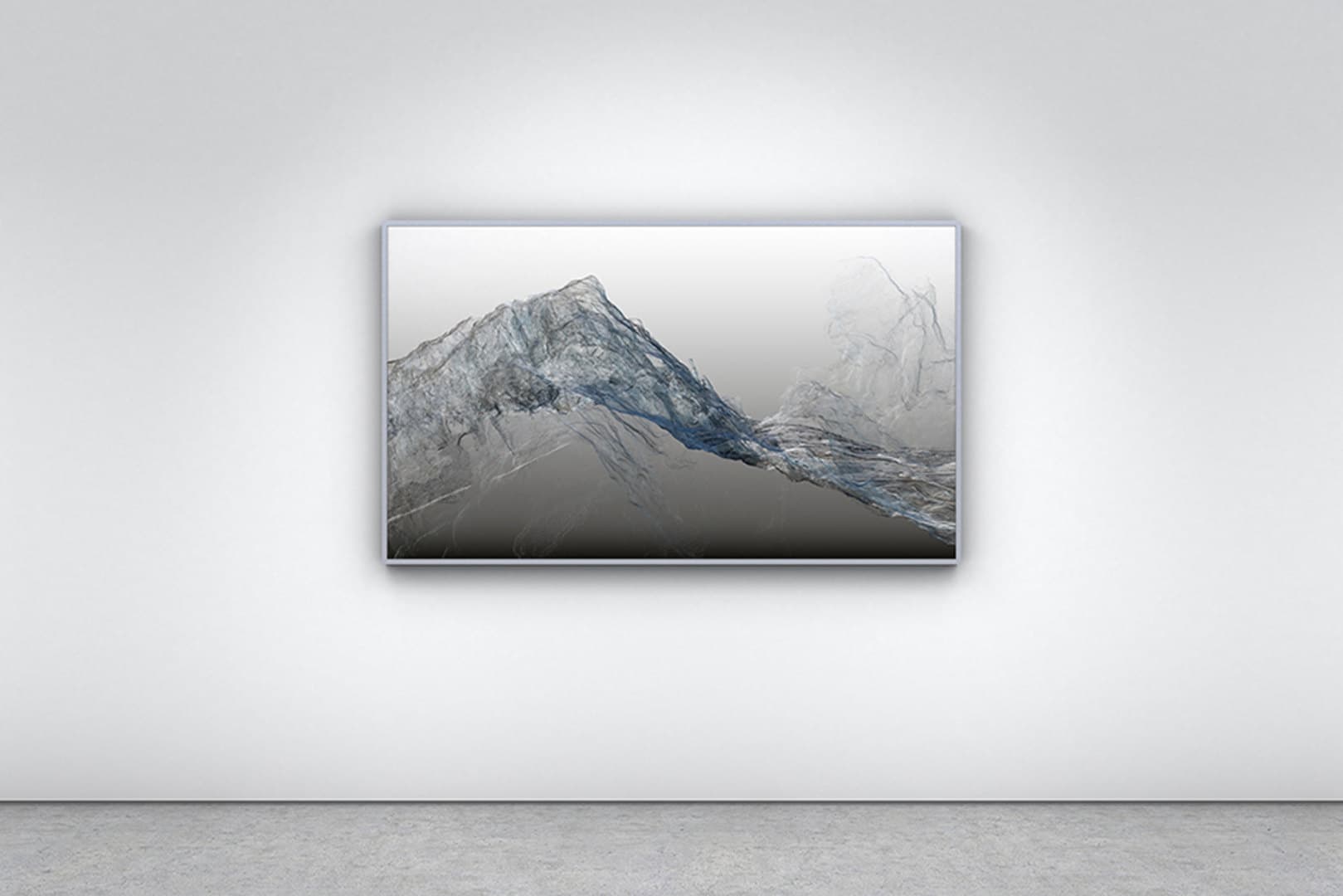“Continuous Topography is a visual representation of what Dan Holdsworth calls “a future archeology”: we see the world as if from a distant point in time rather than space. The world revealed to us is of glacial formations in the Alps – originally formed tens of millions of years ago. The landscapes are plotted in an extraordinary detail that no human eye could ever map or capture: only twenty-first century digital technologies can allow us to know the world with such surgical precision. For the first time in history, we are able to inspect every crevice and curve of a landscape’s contours as if from a God’s-eye-view. Continuous Topography has been created using high-end imaging software ordinarily only available to academic, scientific and military institutions, and in collaboration with a doctoral researcher at Northumbria University. It expands Holdsworth’s interest in what has been called the “geological turn” in art. Changes in our entire planet’s conditions that have been labelled as a new geological age – the Anthopocene – draw attention to timescales before and after humanity; and to what we can really know of the planet as a totality over time and in space. Only art, Holdsworth suggests, can open up such sublime temporal and spatial imaginative vistas. In the series Continuous Topography Holdsworth has amplified his investigation of what constitutes a photographic ‘object’ and a photographic ‘subject’ to their very limits. The ‘objects’ of Holdsworth’s investigation and which constitute his photographic subject matter now range from a single pixel to an entire geological formation. Continuous Topography orchestrates tens of millions of individual pixels, harvested as unique data points, into the shape of an entire world that seems both alarmingly alien and strangely familiar; ghostly, but all too present. Holdsworth’s collaborations with scientists creates a new, peculiarly twenty-first century type of sublimity in which the material world and the virtual world become open to our inspection – and yet elude our grasp.”
Text: Alistair Robinson

